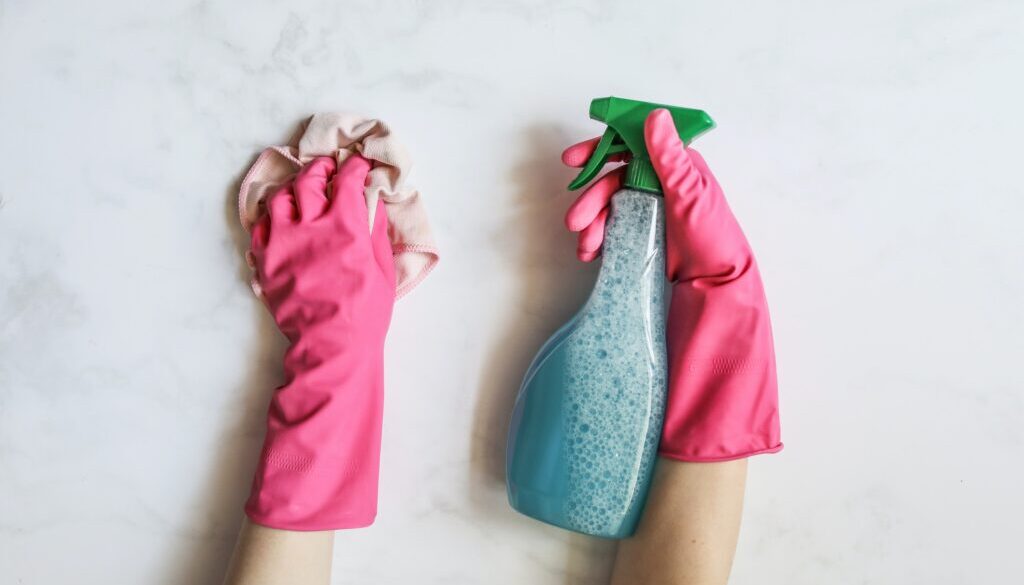Use of “green” cleaning products may improve indoor air quality, study says
Consumers can slash their exposure to certain types of indoor air pollution by using “green” labeled cleaning products, according to new research.
In a study published this month in the journal Chemosphere, researchers said they detected nearly 200 hazardous volatile organic compounds (VOCs), present in common household cleaning products — some at levels that could pose a risk to human health. Products that were labeled “green” or “fragrance-free” were less likely to contain VOCs, they found. The researchers detected over 500 VOCs total.
Many VOCs have both immediate health impacts, such as eye or throat irritation, and long-term impacts, such as nervous system damage or cancer.
“This study is a wake-up call for consumers, researchers and regulators to be more aware of the potential risks associated with the numerous chemicals entering our indoor air,” said Alexis Temkin, an author of the study and senior toxicologist at the Environmental Working Group (EWG), a research and consumer advocacy organization.
Hundreds of hazards
Researchers tested 30 common cleaning products, including popular Glade and Febreze air fresheners, Clorox all-purpose cleaner, Swiffer and Scotchgard floor cleaners, and Windex glass cleaner. They found VOCs in all but one product.
Among the VOCs detected was benzene, which has been linked to leukemia, a type of blood cancer, and is considered a carcinogen by the Environmental Protection Agency (EPA). The researchers also found chloroform, a chemical shown to cause reproductive problems in animal studies; and formaldehyde, which may cause cancers and liver and kidney damage after chronic exposure.
The great majority of hazardous VOC emissions were from conventional products. Products were considered “green” based on marketing claims that the product was safer or healthier, as well as from third-party “green” certifications from the EPA, Green Seal, or UL ECOLOGO, while products were considered “fragrance-free” if they were labeled as such. “Green” products emitted fewer VOCs, and “fragrance-free” products were responsible for the least amount of hazardous VOCs.
There is mounting scientific evidence that “green” or “fragrance-free” products emit fewer VOCs — one 2021 study found that the indoor concentrations of VOCs significantly decreased after 50 Latina women cleaning their homes switched from conventional products to those labeled “green,” while another study of home care aides’ exposure to VOCs showed similar results.
Research has linked VOCs to long-term health hazards including chronic lung disease and lung cancer. Those working in the cleaning industry — an occupation where the majority of workers are women or people of color — are much more likely to develop these health impacts. One study, for example, showed a 50% higher risk of asthma and a 43% higher risk of chronic obstructive pulmonary disease among those working in the cleaning industry.
“Going green with your cleaning products is an easy way to reduce exposure to harmful chemicals. This may be especially important for women’s and children’s health,” said Samara Geller, a scientist at EWG and author on the paper.
3M, Procter & Gamble, and S.C. Johnson, which together own the majority of brands tested by the researchers, did not immediately respond to requests for comments. Last year, Procter & Gamble agreed to pay $8 million in damages to consumers affected by the inclusion of benzene, a VOC and known carcinogen, in multiple products.
Indoor air quality crisis
The widespread use of building materials and cleaning products that emit VOCs raises concerns for worsening indoor air quality, according to the authors. The EPA’s research has shown that levels of VOCs inside homes are up to five times higher than outdoors, regardless of whether a home is located near industrial facilities.
While the federal government monitors and regulates outdoor air quality, there are no federal monitoring programs for indoor air quality, though Americans on average spend about 90% of their time inside. But states and local governments are starting to take notice: Wisconsin lawmakers recently set out to revise a previous air pollution law by introducing a new indoor air quality evaluation process, and New York City officials considered proposing new indoor air quality regulations this summer.
Last month, researchers at the Johns Hopkins Bloomberg School of Public Health released a framework for states to adopt to ensure good indoor air quality in public spaces, which included recommendations for better indoor air quality data collection and research and more efforts to raise public awareness of the issue.
Ventilating an area when cleaning and storing unused chemicals in areas where people do not spend much time can help to reduce indoor air pollution, according to the EPA.
 EWG
EWG


